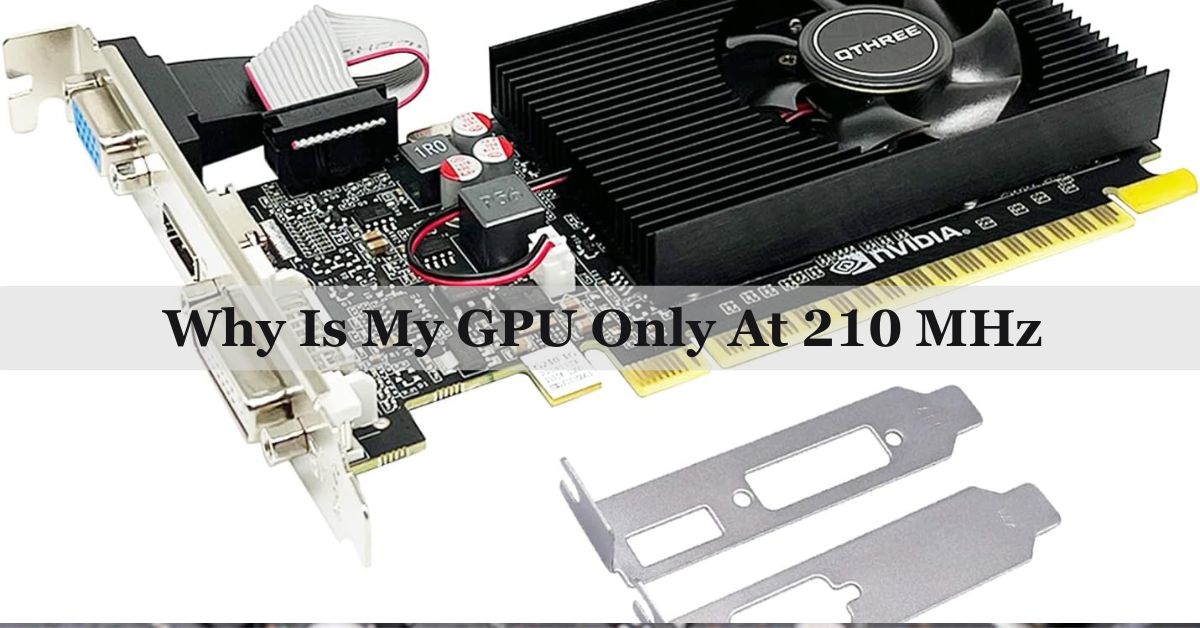I noticed my GPU was stuck at 210 MHz, and games were running slower than usual. After checking the power settings, I found my PC was in power-saving mode, limiting the GPU’s speed. Once I switched to “High Performance” and updated my drivers, the GPU clock speed returned to normal, and my gaming performance improved.
Your GPU may be stuck at 210 MHz due to power-saving settings, outdated drivers, overheating, or power limit restrictions. Check settings, update drivers, and monitor temperatures.
In this article, we’ll discuss “why is my GPU only at 210 MHz, common causes of GPU stuck at 210 MHz, and also how to fix a GPU stuck at 210 MHz”.
What Does 210 MHz Mean For Your GPU?
GPUs have different clock speeds based on workload. When idle or performing non-demanding tasks, the GPU lowers its clock speed to save power and reduce heat. However, if your GPU stays at 210 MHz even under load, there might be a problem.
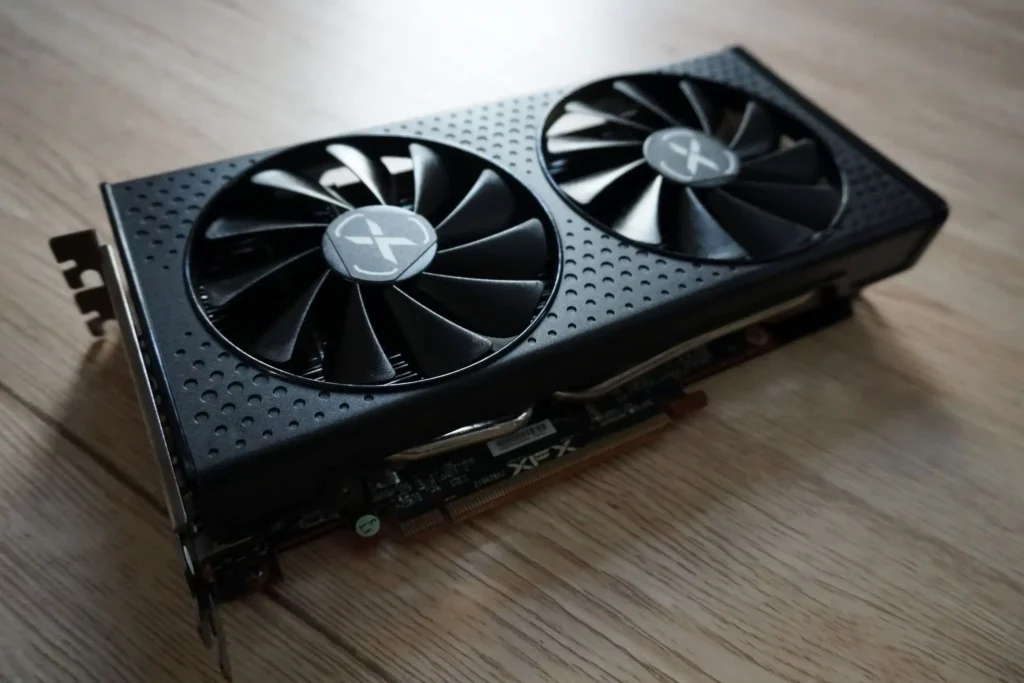
Why Is My GPU Only At 210 MHz?
If your GPU is stuck at 210 MHz, it’s likely due to power-saving settings, outdated drivers, overheating, or insufficient power supply. The GPU automatically reduces its speed when not under load, but if it stays at 210 MHz during tasks, check your system’s power settings, update drivers, improve cooling, and ensure proper power connections to restore full performance.
Also Read: What Is A Good GPU Clock Speed MHz – Complete Guide 2025!
Common Causes Of GPU Stuck at 210 MHz:
1. Power-Saving Mode:
GPUs automatically switch to a lower clock speed when not under heavy use. But sometimes, power-saving settings force the GPU to stay in a low-power state even when it’s needed.
2. Incorrect Driver Settings:
Outdated or corrupted GPU drivers can cause performance issues, including limiting the clock speed. A wrong driver configuration can also keep your GPU from running at its full potential.
3. Power Limit Set Too Low:
If your GPU power limit is restricted, it won’t boost to higher clock speeds. This can be due to manual settings in your GPU control panel or software limits imposed by manufacturers.
4. Overheating Issues:
When a GPU overheats, it throttles performance to prevent damage. If your card reaches high temperatures, it may lock itself at a low frequency like 210 MHz.
5. PCIe Power Issues:
If your GPU isn’t receiving enough power from the PCIe slot or power cables, it won’t function properly. A faulty power connection can force the GPU to stay at a lower clock speed.
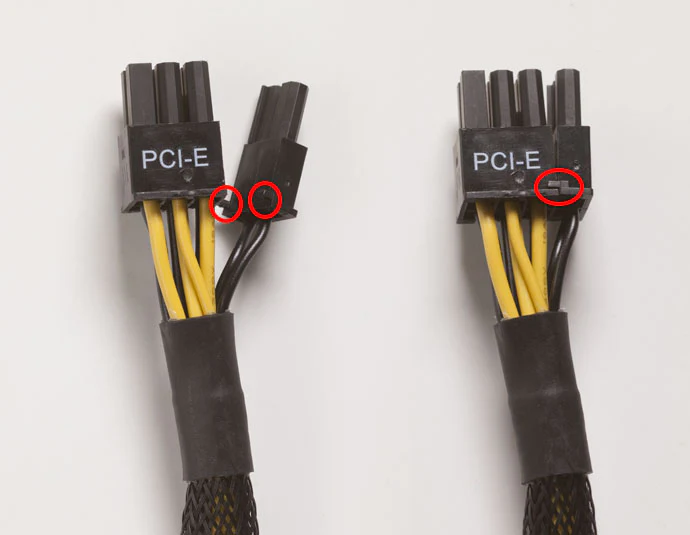
6. Windows Power Settings:
If your PC is set to Power Saver mode, it may restrict GPU performance. This setting prevents the GPU from using more power than necessary.
7. Software or BIOS Bugs:
A software glitch in monitoring tools, or a BIOS misconfiguration, can sometimes cause your GPU to misreport or limit clock speeds.
How To Fix A GPU Stuck At 210 MHz?
1. Change Power Settings to High Performance:
Ensure your system is set to allow maximum GPU performance:
- Go to Control Panel > Power Options.
- Select High Performance.
- If using a laptop, plug in the charger to avoid battery restrictions.
2. Update or Reinstall GPU Drivers:
Corrupted or outdated drivers can limit performance. Update them with these steps:
- Open Device Manager.
- Expand Display Adapters.
- Right-click on your GPU and choose the option to update the driver.
- Alternatively, use NVIDIA GeForce Experience or AMD Adrenalin Software to update.
If updating doesn’t help, try a clean driver installation using DDU (Display Driver Uninstaller).
3. Adjust GPU Power Limits in MSI Afterburner:
Your GPU’s power limit might be too low. You can increase it using MSI Afterburner:
- Open MSI Afterburner.
- Increase Power Limit to its maximum (if available).
- Click Apply and restart your PC.
4. Monitor GPU Temperatures:
If overheating is causing the issue, clean your GPU and improve cooling:
- Check temperatures using HWMonitor or GPU-Z.
- If temps exceed 85°C, clean dust from the GPU and case.
- Improve airflow with additional case fans.
- Consider repasting thermal paste if the GPU is old.
5. Check PCIe Power Connections:
Ensure your GPU is receiving enough power:
- If your GPU has dedicated power cables, ensure they are properly connected.
- Test with another PSU (Power Supply Unit) if possible.
6. Disable Third-Party Overlays and Monitoring Software:
Some software like Rivatuner, MSI Afterburner, or ASUS GPU Tweak can interfere with GPU performance. Disable overlays and see if the issue is resolved.
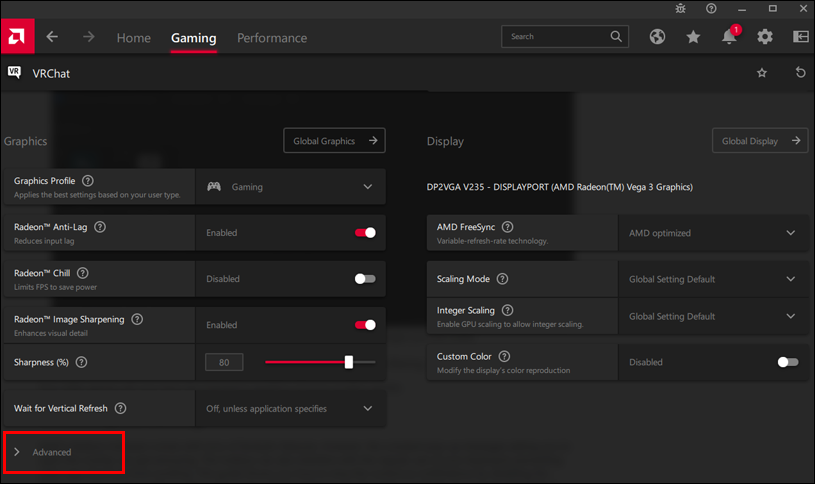
7. Reset BIOS To Default Settings:
If a BIOS setting is causing the issue, reset it:
- Restart your PC and enter BIOS (Press Del or F2 during boot).
- Find the Reset to Default option.
- Save changes and exit.
Also Read: How To Free Up All Dedicated GPU Memory From DWM – Easy Tips 2025!
When To Seek Professional Help?
If none of the solutions work, your GPU might have a hardware issue. Consider these options:
- Check with your GPU manufacturer if it’s still under warranty.
- Test your GPU in another system to rule out motherboard or PSU issues.
- Consult a technician if physical damage is suspected.
Why Is My GPU Only At 210 MHz Gaming?
If your GPU is stuck at 210 MHz while gaming, it could be due to power-saving settings, outdated drivers, or overheating. Check your power plan settings and switch to “High Performance.” Update your GPU drivers, monitor temperatures, and make sure the GPU is properly cooled. Additionally, ensure your power supply is delivering enough power to avoid throttling.
Why Is My GPU Not Running At Full Speed?
Your GPU may not be running at full speed due to several reasons, such as power-saving settings, outdated drivers, overheating, or incorrect power limits. To fix this, ensure your system is set to high performance, update your drivers, monitor GPU temperatures, and check for any power or connection issues. Proper cooling and adequate power are essential for peak performance.
What Should My GPU Clock MHz Be?
Your GPU clock speed (measured in MHz) typically varies based on the model and task. For gaming and heavy tasks, a clock speed between 1000 MHz and 2000 MHz is common. High-end GPUs may even exceed this.
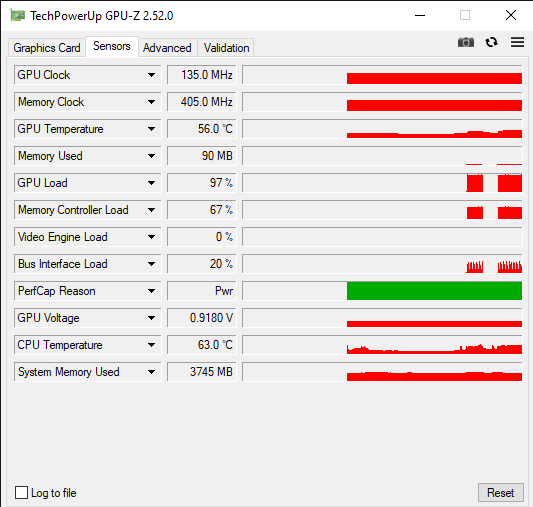
However, idle or low-power tasks will cause the clock speed to drop to conserve energy. Always monitor your GPU’s performance to ensure it’s running at optimal speeds for your activities.
Also Read: Is It Bad To Stress Test Your GPU – Risks & Safe Practices 2025!
Is 210 MHz Harmful For My GPU?
No, 210 MHz is not directly harmful to your GPU. It’s a low clock speed typically seen during idle or low-power states. However, if your GPU stays at 210 MHz even during demanding tasks, it suggests there’s an issue, such as power settings, outdated drivers, or overheating.
While it’s not dangerous in short bursts, it limits performance, and fixing the underlying issue is important for optimal GPU functionality and longevity.
Can A Faulty Power Supply Cause My GPU To Run At 210 Mhz?
Yes, a faulty power supply can cause your GPU to run at 210 MHz. If the power supply is not providing enough power to the GPU, it may throttle the performance to prevent damage. This can result in the GPU staying at low clock speeds. Make sure your power supply is adequate for your GPU’s needs and check all connections to ensure proper power delivery.
How Do I Fix Low GPU Frequency?
To fix low GPU frequency, first, check your power settings and switch to “High Performance” mode in Windows. Make sure your GPU drivers are updated to the most recent version. Use software like MSI Afterburner to adjust power limits and prevent throttling. Clean your GPU to prevent overheating and improve airflow in your PC case. Finally, verify that your GPU is getting enough power from the power supply and PCIe connections.
How Do I Increase MHz On My GPU?
To increase the MHz on your GPU, first ensure your system is set to “High Performance” mode in power settings. Next, update your GPU drivers to the latest version. You can also use tools like MSI Afterburner to manually adjust the GPU clock speed and power limits. Make sure your GPU is well-cooled to prevent overheating. Monitor your system to ensure stable performance after making changes.
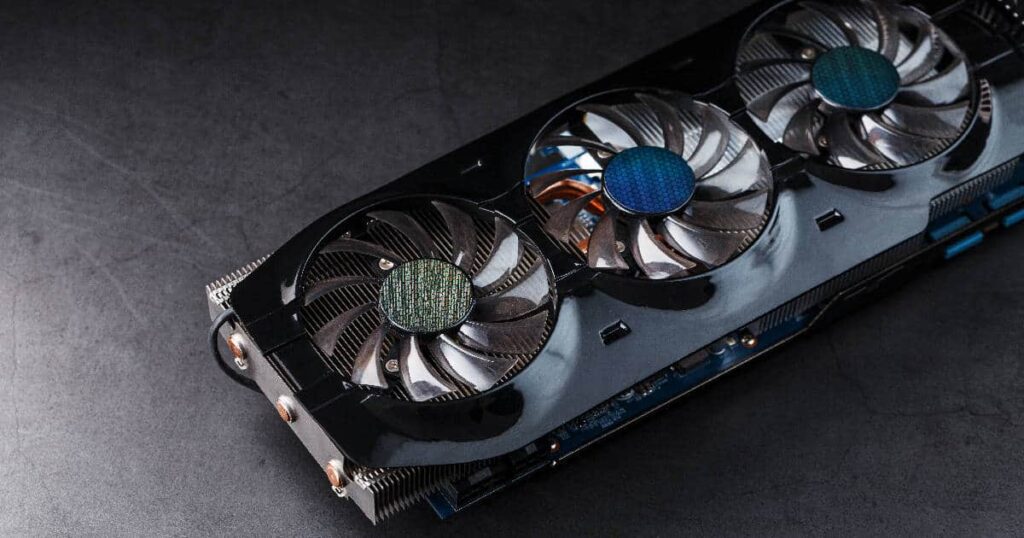
MSI GP76 Low GPU Clock Speed:
If your MSI GP76 laptop is showing low GPU clock speeds, it could be due to power-saving settings, outdated drivers, or overheating. Ensure your laptop is in “High Performance” mode in Windows power settings. Update your GPU drivers and check for overheating issues by monitoring temperatures. If the issue persists, reset power limits in MSI Afterburner or consider checking the power supply and cables to ensure proper GPU performance.
Also Read: GPU Power Consumption Drops – Solve Power Drops Today!
FAQs:
1. What Is The Normal Clock Speed For A GPU?
The normal clock speed for a GPU depends on the model, but it typically ranges between 1000 MHz and 2000 MHz or more. If your GPU is stuck at 210 MHz, it’s likely not functioning as expected.
2. Can I Force My GPU To Run At A Higher Clock Speed?
Yes, you can adjust the power settings, update drivers, and use software like MSI Afterburner to increase the clock speed. But make sure to monitor the temperature to avoid overheating.
3. Does Using A Laptop Affect GPU Clock Speeds?
Yes, many laptops have power-saving features that limit GPU clock speeds to save battery. Plugging your laptop into a charger and switching to “High Performance” mode can help.
4. Why Does My GPU Run At Low Speeds Even When Playing Games?
This could be due to incorrect driver settings, a cooling issue, or power-saving modes. Check your system’s settings, drivers, and ensure the GPU is properly cooled during gaming.
5. Can A Malware Infection Cause My GPU To Underclock?
Yes, some types of malware can affect system performance, including how the GPU runs. Performing a complete system scan can help identify and eliminate any possible threats.
6. Does A Low Frame Rate Cause The GPU To Run At 210 Mhz?
A low frame rate can sometimes indicate that the GPU is not being fully utilized, but if the clock speed is stuck at 210 MHz, it suggests another underlying issue, such as power settings or overheating.
7. How Can I Check If My GPU Is Working At Its Full Potential?
You can use monitoring software like GPU-Z, HWMonitor, or MSI Afterburner to track your GPU’s clock speeds, temperature, and performance during tasks like gaming or rendering.
8. Could A Driver Conflict Cause My GPU To Run At 210 Mhz?
Yes, conflicting or outdated drivers could result in performance issues, including forcing the GPU to stay at a lower clock speed. Updating or reinstalling your drivers can resolve this.
Final Words:
In conclusion, if your GPU is stuck at 210 MHz, it’s likely due to power-saving settings, outdated drivers, overheating, or power issues. To fix this, switch to high-performance mode, update your drivers, monitor temperatures, and ensure your power supply is sufficient. Regular maintenance and proper cooling will help your GPU perform at its best, ensuring smoother gaming and tasks.
Related Posts:
- Is 99% GPU Usage Bad? – Use Monitoring Tools Regularly!
- Is 57° C Hot For A GPU? – A Complete Guide For 2024!
- Is BeamNG CPU Or GPU Intensive – Boost Your Setup In 2024!
- Red Light On GPU When Pc Is Off – Don’t Panic, Check This Now

